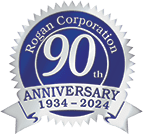Maintaining Our High Standard of Quality
Before two-shot molding was created, most knobs were made of a phenolic material, ABS, or even machined metal. Having the ability to mold a soft thermoplastic elastomer (TPE) material onto a hard plastic base allowed Rogan to improve on standard knobs and handles and make them usable for a wider range of applications.
Rogan sells to a diverse set of industries, all of which need specific types, sizes, and specifications for their knobs and hand hardware. Our knobs can be used for the following industry applications:
- Audio
- Music
- Consumer electronics
- Medical/dental equipment
- Furniture
- Kitchen and cooking equipment
- Laboratory equipment
- Marine components
- Power equipment
- Automotive applications
Rogan’s injection molds are maintained in our toolroom with a rigorous preventative maintenance program, ensuring your product is made to the highest possible standard. Two-shot molding tends to be a delicate operation, and Rogan’s team of injection molding professionals are well-equipped to handle all two-shot injection molding challenges thanks to years of industry experience. We have consistently been at the forefront of injection molding technology, finding new ways to deliver innovative solutions for all our customers.
What Types of Materials are Used in Two-shot Injection Molding?
When it comes to Rogan’s two-shot injection molded knobs, most often there are two variations of resin material used: a stronger base material as the knob or handle, and a softer, more flexible rubber molded onto it. Most often we use a standard grade polypropylene or a glass-filled polypropylene for the base material – the standard grade polypropylene is used in control knobs, while the glass filled grades are often used in clamping knobs.
Typically, TPE rubber is used for molding on the base material to enhance the grip. The TPE Rogan uses is a bondable grade to polypropylene, meaning that the rubber material chemically bonds with the plastic without the need of mechanical bonding. The chemical bonding is so strong that it cannot be separated from the base material.
How Two-Shot Injection Molding at Rogan Got Started
In 1979, Rogan was the first knob company to mold a knob with two different resin materials – a specialized process known today as two-shot injection molding. Throughout the 1980s, our company continued to be a pioneer in two-shot and multi-shot injection molding, which then paved the way for the introduction of our PureTouch® Series of control knobs. These knobs feature a rubber TPE molded onto polypropylene, which helps add texture, create a better feel, and enhance the appearance. To this day, Rogan continues to maintain the industry standard with high-quality soft touch knobs manufactured to customers’ exact specifications.
The Rogan Difference
For many years, we have developed a vast array of unique and different styles of knobs to cover a wide range of industries. This innovation has led to Rogan providing extensive customization with our knobs, which is a key advantage over our competition.
Rogan Corporation is driven by our mission to deliver the highest level of quality with every knob and hand hardware we manufacture. As an ISO 9001:2015 certified supplier, Rogan understands safety, quality and an efficient work environment are key to creating the best possible products.
Contact us today to learn more about two-shot injection molding.




